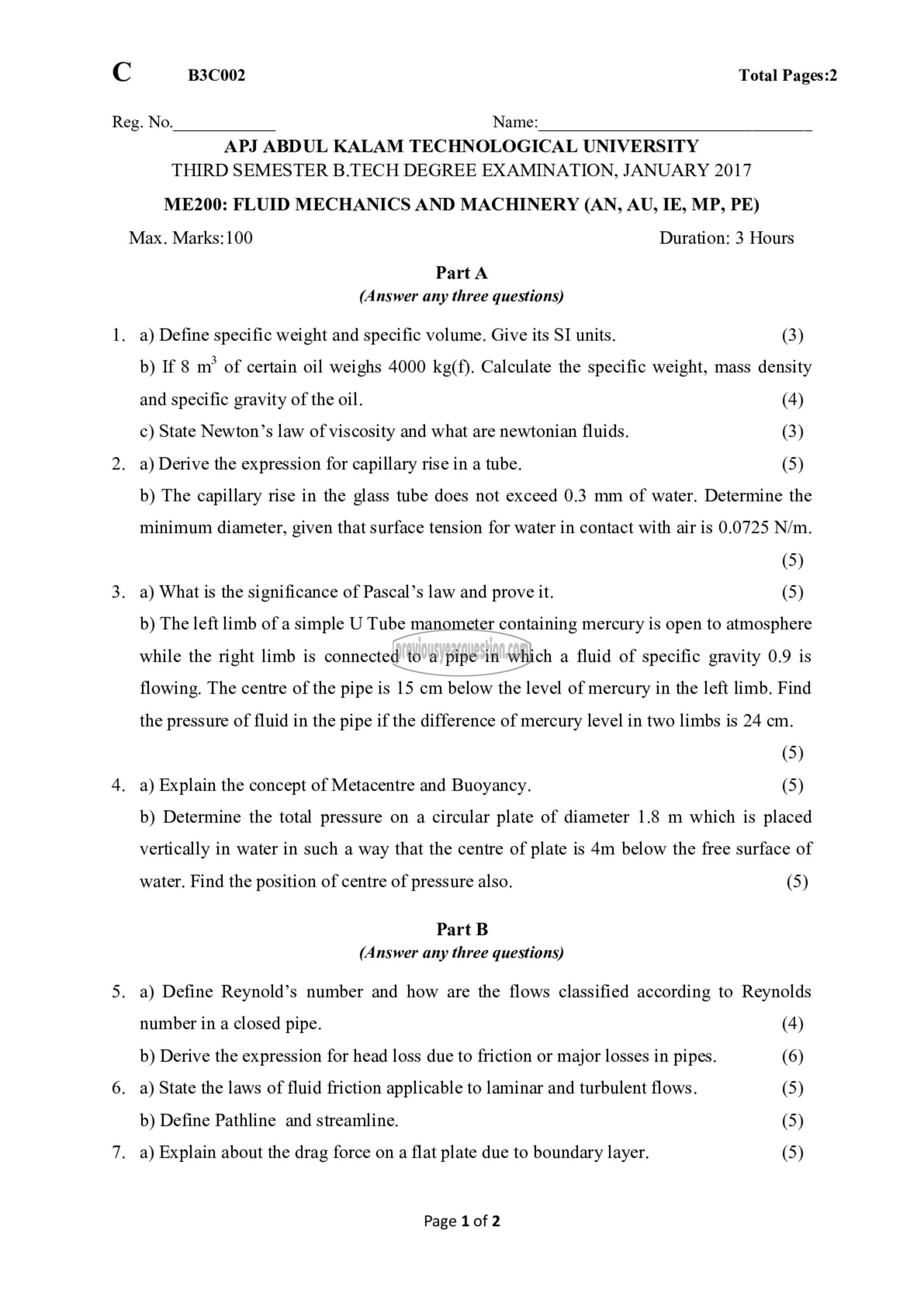APJ ABDUL KALAM TECHNOLOGICAL UNIVERSITY Previous Years Question Paper & Answer
Semester : SEMESTER 3
Subject : Fluid Mechanics & Machinery
Year : 2017
Term : JANUARY
Branch : AERONAUTICAL ENGINEERING
Scheme : 2015 Full Time
Course Code : ME 200
Page:1
C B3C002 Total Pages:2
Reg. No. Name:
APJ ABDUL KALAM TECHNOLOGICAL UNIVERSITY
THIRD SEMESTER B.TECH DEGREE EXAMINATION, JANUARY 2017
ME200: FLUID MECHANICS AND MACHINERY (AN, AU, IE, MP, PE)
Max. Marks:100 Duration: 3 Hours
Part A
(Answer any three questions)
1. a) Define specific weight and specific volume. Give its SI units. (3)
b) 18ന് of certain oil weighs 4000 kg(f). Calculate the specific weight, mass density
and specific gravity of the oil. (4)
c) State Newton’s law of viscosity and what are newtonian fluids. (3)
2. a) Derive the expression for capillary rise in a tube. (5)
b) The capillary rise in the glass tube does not exceed 0.3 mm of water. Determine the
minimum diameter, given that surface tension for water in contact with air is 0.0725 N/m.
(5)
3. a) What is the significance of Pascal’s law and prove it. (5)
b) The left limb of a simple U Tube manometer containing mercury is open to atmosphere
while the right limb is connected to a pipe in which a fluid of specific gravity 0.9 is
flowing. The centre of the pipe is 15 cm below the level of mercury in the left limb. Find
the pressure of fluid in the pipe if the difference of mercury level in two limbs is 24 cm.
(5)
4. a) Explain the concept of Metacentre and Buoyancy. (5)
b) Determine the total pressure on a circular plate of diameter 1.8 m which is placed
vertically in water in such a way that the centre of plate is 4m below the free surface of
water. Find the position of centre of pressure also. (5)
Part B
(Answer any three questions)
5. a) Define Reynold’s number and how are the flows classified according to Reynolds
number in a closed pipe. (4)
b) Derive the expression for head loss due to friction or major losses in pipes. (6)
6. a) State the laws of fluid friction applicable to laminar and turbulent flows. (5)
b) Define Pathline and streamline. (5)
7. a) Explain about the drag force on a flat plate due to boundary layer. (5)
Page 1 of 2
